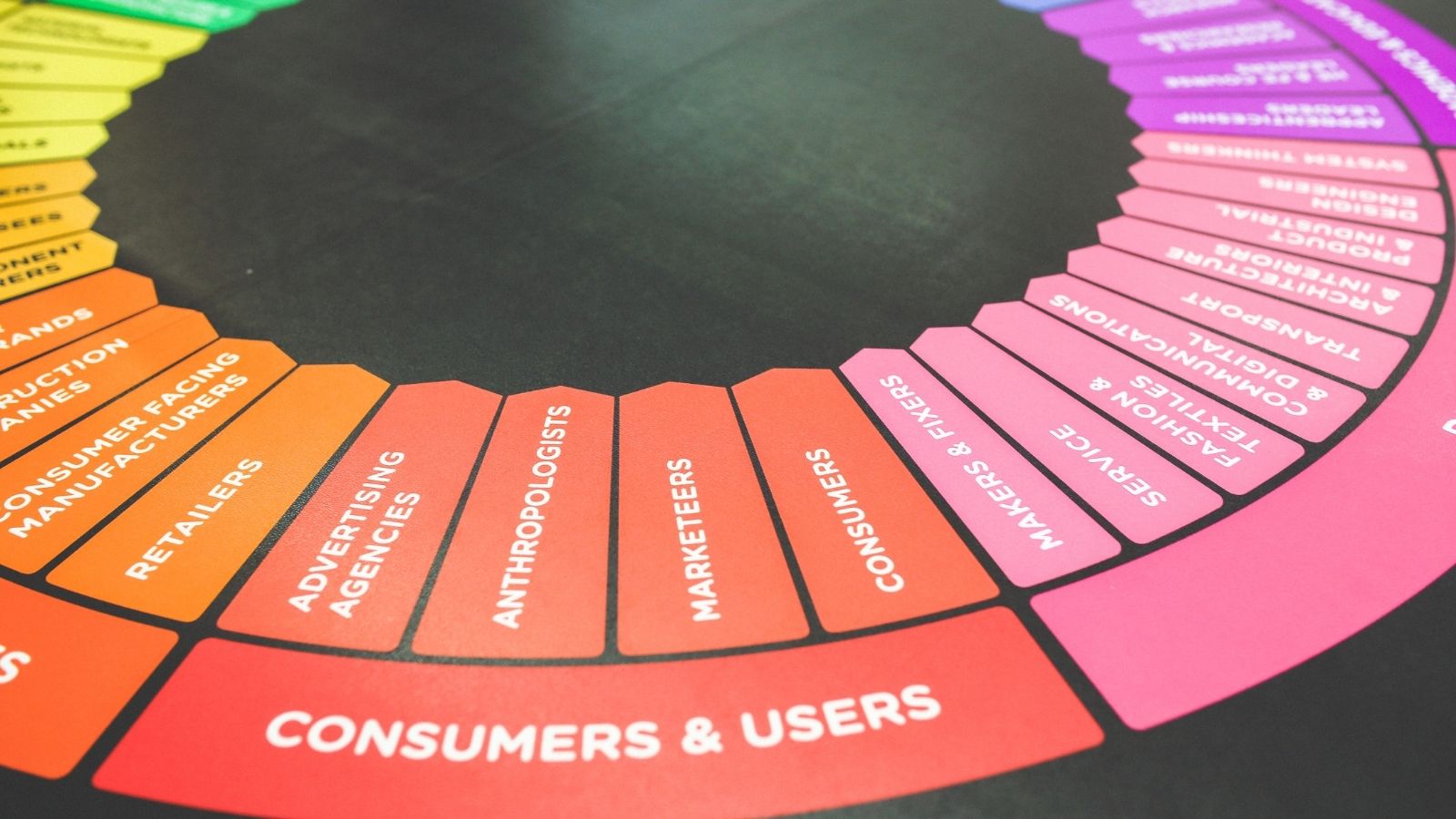Successful brands know that growth often requires more than just one great product or service. To stay relevant, reach new audiences, and adapt to changing markets, many turn to sub-branding examples.
By creating distinct yet connected brands, companies can diversify their offerings, speak to specific customer needs, and strengthen their overall identity.
In this article, we’ll look at real-world examples of sub-branding in action—showing how businesses have used this strategy to stand out, expand their reach, and thrive in competitive markets.
Sub-Branding Examples from Top Companies
Below are standout sub-branding examples of how major brands have successfully used sub-branding to innovate and thrive in competitive markets.
Toyota → Lexus
- Parent Brand: Toyota
- Target Market: Luxury car buyers seeking performance, comfort, and innovation.
- Unique Selling Point: Combines advanced technology with meticulous attention to detail and a premium customer experience.
Lexus, Toyota’s luxury sub-brand, was created to compete in the high-end automobile market, blending reliability with sophistication.
From its debut, Lexus has focused on delivering exceptional performance, luxurious interiors, and cutting-edge features, establishing itself as a leader in the global luxury car market while maintaining Toyota’s reputation for dependability.
Coca-Cola → Fanta
- Parent Brand: Coca-Cola
- Target Market: Younger, fun-loving audiences seeking vibrant, fruity beverages.
- Unique Selling Point: Bold personality, bright colors, and adventurous marketing campaigns.
Fanta, introduced by Coca-Cola, was designed to appeal to a younger demographic with a playful and lively image. With its global presence and diverse range of fruity flavors, Fanta embodies youthful energy and creativity, allowing Coca-Cola to expand its reach while maintaining its core brand identity of classic refreshment.
Nike → Jordan
- Parent Brand: Nike
- Target Market: Athletes and sneaker enthusiasts focused on performance and style.
- Unique Selling Point: Distinct culture, exclusive designs, and a loyal fan base.
The Jordan brand, a sub-brand of Nike, has established itself as a symbol of both athletic performance and streetwear style. With its own marketing strategies and iconic designs, Jordan thrives within the Nike umbrella, catering to a niche that values innovation, exclusivity, and cultural relevance.
Honda → Acura
- Parent Brand: Honda
- Target Market: Luxury car buyers looking for reliability combined with high-end performance.
- Unique Selling Point: Precision engineering with advanced safety features and a focus on performance-oriented design.
Acura, Honda’s luxury sub-brand, was launched to offer premium vehicles that combine Honda’s engineering excellence with sophisticated styling and comfort.
Acura vehicles are known for their precision-crafted performance, innovative features, and luxurious interiors, making them a standout choice in the luxury automobile market.
Nissan → Infiniti
- Parent Brand: Nissan
- Target Market: Premium car buyers seeking cutting-edge design and advanced driving technology.
- Unique Selling Point: Modern aesthetics, powerful engines, and driver-focused innovations.
Infiniti, Nissan’s high-end sub-brand, was established to challenge traditional luxury brands with sleek designs and innovative technology.
Infiniti cars are designed to offer a balance of luxury and performance, blending craftsmanship with advanced engineering to cater to discerning customers around the globe.
Lenovo → Legion
- Parent Brand: Lenovo
- Target Market: Gamers demanding high-performance and specialized hardware.
- Unique Selling Point: Cutting-edge technology and designs tailored to gaming enthusiasts.
Lenovo Legion is a dedicated sub-brand that offers laptops and desktops specifically designed for gaming. By focusing on powerful performance and addressing gamers’ unique needs, Legion has carved out a space distinct from Lenovo’s general-purpose computers while enhancing its presence in the gaming industry.
Microsoft → Xbox
- Parent Brand: Microsoft
- Target Market: Gaming enthusiasts and interactive media consumers.
- Unique Selling Point: High-performance consoles, exclusive games, and a thriving online ecosystem.
Xbox, Microsoft’s sub-brand, is a leader in the gaming industry with its innovative consoles and services. By creating a distinct identity, Xbox caters to a global gaming community, reinforcing Microsoft’s role as a major player in entertainment and interactive media.
Hyundai → Genesis
- Parent Brand: Hyundai
- Target Market: Luxury car enthusiasts seeking modern design and premium features.
- Unique Selling Point: Bold, elegant styling with cutting-edge technology and exceptional attention to detail.
Genesis, originally launched as a model under Hyundai, evolved into a standalone sub-brand focused on delivering luxury vehicles.
With its commitment to premium materials, innovative technology, and customer-focused design, Genesis has rapidly gained recognition as a competitive player in the luxury car market.
Volkswagen → Audi
- Parent Brand: Volkswagen (VW)
- Target Market: Upscale buyers looking for sophisticated design and advanced driving dynamics.
- Unique Selling Point: German engineering excellence combined with sleek, modern aesthetics.
Audi, Volkswagen’s premier luxury sub-brand, is synonymous with performance, innovation, and refined style.
From its iconic quattro all-wheel-drive system to its focus on cutting-edge technology, Audi has become a leader in the global luxury car market, appealing to drivers who value both elegance and dynamic driving experiences.
Ford → Lincoln
- Parent Brand: Ford
- Target Market: Luxury car buyers looking for elegant design and advanced comfort features.
- Unique Selling Point: Timeless sophistication paired with cutting-edge technology and refined craftsmanship.
Lincoln, Ford’s luxury sub-brand, focuses on delivering upscale vehicles that combine premium materials with innovative features. Known for its smooth ride quality and luxurious interiors, Lincoln appeals to those seeking a blend of elegance and advanced technology within the Ford family.
Marriott → Ritz-Carlton
- Parent Brand: Marriott
- Target Market: Affluent travelers seeking ultra-luxury experiences.
- Unique Selling Point: Impeccable service, refined luxury, and personalized attention.
Ritz-Carlton, Marriott’s ultra-luxury sub-brand, caters to elite travelers who value elegance and sophistication. With its world-class service and exclusive amenities, Ritz-Carlton reinforces Marriott’s global presence while appealing to a high-end clientele.
Sony → Alpha
- Parent Brand: Sony
- Target Market: Professional photographers and advanced hobbyists.
- Unique Selling Point: Cutting-edge imaging technology and exceptional performance.
Sony Alpha is a sub-brand focused on high-end cameras that deliver unparalleled quality and innovation. Designed for professionals and enthusiasts, Alpha’s sophisticated technology sets it apart from Sony’s mainstream electronics, cementing its reputation in the photography world.
General Motors → Cadillac
- Parent Brand: General Motors (GM)
- Target Market: Premium car buyers who appreciate heritage, style, and innovation.
- Unique Selling Point: A blend of bold design, modern luxury, and cutting-edge technology.
Cadillac, GM’s flagship luxury sub-brand, represents a rich history of innovation and style in the automotive industry.
With a focus on bold designs and state-of-the-art technology, Cadillac continues to redefine modern luxury while remaining a symbol of American automotive excellence.
BMW → Rolls-Royce
- Parent Brand: BMW
- Target Market: Ultra-luxury buyers seeking bespoke craftsmanship and exclusivity.
- Unique Selling Point: Handcrafted excellence tailored to individual tastes, offering unparalleled prestige.
Rolls-Royce, BMW’s ultra-luxury sub-brand, epitomizes exclusivity and bespoke design. Known for its handcrafted vehicles, Rolls-Royce offers unmatched luxury, seamlessly blending heritage with modern innovation to create some of the most iconic and desirable cars in the world.
Unilever → Dove
- Parent Brand: Unilever
- Target Market: Health-conscious consumers seeking gentle, high-quality personal care products.
- Unique Selling Point: Emphasis on real beauty, confidence, and self-esteem.
Dove, Unilever’s beauty and personal care sub-brand, has redefined the market with its focus on authenticity and high-quality formulations. By promoting self-esteem and celebrating real beauty, Dove stands out as a trusted and empowering brand within Unilever’s diverse portfolio.
DoubleTree → Hilton
- Parent Brand: Hilton
- Target Market: Travelers seeking upscale accommodations with personalized service.
- Unique Selling Point: Warm hospitality, signature chocolate chip cookie welcome, and premium amenities.
DoubleTree, a sub-brand of Hilton, offers a more personalized and upscale experience than Hilton’s standard properties. Known for its welcoming atmosphere and thoughtful touches, DoubleTree appeals to guests seeking comfort and a premium stay within the Hilton family.
Mercedes-Benz → Maybach
- Parent Brand: Mercedes-Benz
- Target Market: Affluent consumers seeking the pinnacle of luxury and sophistication.
- Unique Selling Point: Opulent design, handcrafted interiors, and exceptional comfort.
Maybach, Mercedes-Benz’s ultra-luxury sub-brand, redefines automotive luxury with its focus on bespoke craftsmanship and exclusive features.
Offering an elevated experience beyond Mercedes’ standard models, Maybach vehicles cater to those who desire unparalleled comfort and status.
Stellantis → Maserati
- Parent Brand: Stellantis (formerly FCA)
- Target Market: Luxury car buyers seeking Italian design and high-performance vehicles.
- Unique Selling Point: Italian craftsmanship paired with sporty performance and exclusivity.
Maserati, Stellantis’ premium sub-brand, is renowned for its distinctive Italian design and exhilarating performance. With its iconic trident logo, Maserati combines luxury and sports car attributes, creating vehicles that exude sophistication and dynamism.
Volkswagen → Porsche
- Parent Brand: Volkswagen (VW)
- Target Market: High-performance car enthusiasts who value precision engineering and luxury.
- Unique Selling Point: Exceptional handling, innovative technology, and iconic design.
Porsche, part of Volkswagen’s luxury lineup, is synonymous with high-performance sports cars and German engineering excellence.
Known for its precision, agility, and luxurious interiors, Porsche has solidified its reputation as a brand that delivers thrilling driving experiences for discerning enthusiasts.
What is Sub-Branding?
Sub-branding is the creation of a distinct brand under a parent company to target specific audiences or offer specialized products while leveraging the parent brand’s reputation.
This strategy enables businesses to reach new customer groups, such as younger or culturally diverse audiences, without confusing or diluting their core identity.
It also allows for marketing flexibility, as sub-brands can craft independent messaging tailored to specific preferences while still benefiting from the trust and recognition of the parent brand.
Related: Brand Extensions vs. Sub-branding
How to Build a Successful Sub-Brand
Drawing inspiration from successful sub-branding examples, launching a sub-brand is an exciting opportunity to grow your business. To ensure success, follow these key steps to make your sub-brand stand out and thrive.
Understand Your Parent Brand
Before launching your sub-brand, it’s essential to fully understand your parent brand’s values, mission, and strengths. Your sub-brand should reflect these core principles but also bring something unique to the table.
This balance ensures that the sub-brand feels like a natural extension of the parent brand while offering fresh appeal to a different audience.
Research Your Target Audience
To make your sub-brand successful, you must know precisely who you’re trying to reach. What are their needs, desires, and pain points? Understanding your audience well allows you to create a product or service that genuinely resonates with them.
Take time to gather insights through surveys, focus groups, or by studying your competitors.
Ensure Clear Distinction
While your sub-brand should connect with the parent brand, it needs its identity. Think about how you want people to perceive it. Will it have a different logo, color scheme, or tone?
The goal is to create a sub-brand that stands out but still feels connected to the parent brand. This allows your sub-brand to speak to a different audience without confusing your core customers.
Test Your Ideas
Don’t rush into the market without testing. Before fully committing, conduct market research to see if your sub-brand concept matches your target audience. You can use focus groups and surveys or launch a limited product version to see how people respond.
Testing allows you to refine your idea and adjust before investing too much time and money.
Maintain Consistency
Even though your sub-brand has its own identity, consistency is critical. Ensure your sub-brand’s messaging, tone, and values align with the parent brand. This helps build trust and ensures customers understand the connection.
Whether it’s through ads, social media posts, or customer service, your sub-brand should deliver a consistent experience that reinforces the relationship with the parent brand.
Unlocking the Potential of Sub-Branding
Sub-branding also opens opportunities for collaboration and co-branding, enabling businesses to create partnerships that enhance both visibility and value.
By establishing a sub-brand, companies can align with other trusted brands or industry leaders to develop exclusive products, limited editions, or joint ventures. These partnerships not only drive excitement but also introduce sub-brands to entirely new audiences, amplifying their reach and impact.
Moreover, sub-brands can become powerful storytelling tools. Through a carefully crafted narrative, sub-brands can highlight unique aspects of their identity—such as a commitment to sustainability, innovation, or cultural relevance—without overwhelming the parent brand’s broader message.
This storytelling approach creates deeper emotional connections with target audiences, enhancing both engagement and loyalty. By embracing these additional strategies, businesses can unlock the full potential of sub-branding to thrive in competitive markets.
Related:
- 6 Actionable Branding Strategies You Can Adopt Right Away
- Digital Branding For Your Small Business: Essential Guidelines To Follow
- How Social Media Marketing Helps to Grow Your Business

We empower people to succeed through information and essential services. Do you need help with something? Contact Us.
Want a heads-up once a week whenever a new article drops?







